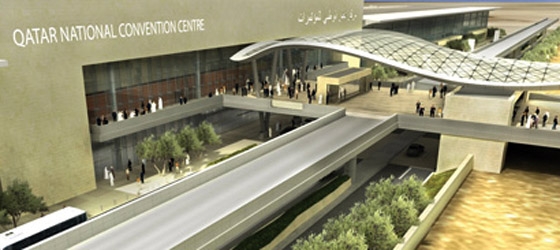Qatar Green Building Council (QGBC) hosted a trade delegation from Australia who shared their expertise on sustainable and environmentally friendly building practices. Under the banner of Sustainable Design in Hot Arid Climates, the joint Green Build Seminar brought together key policymakers from Qatar’s green building industry and leading Australian experts in energy conservation and green building research and best practice.
In his opening remarks, QGBC Director Eng. Meshal Al Shamari pointed out the similarities between the Australian and Qatari environment as water scarcity and dry arid landscapes are a feature of both countries. He said, “Therefore, the two countries can learn much from each other. Issues of sustainability and energy conservation are of increasing importance in Qatar in alignment with the Qatar National Vision 2030. As a result, a whole industry is now beginning to grow here with a focus on conservation, sustainability and renewable energy.”
QGBC Board member and Founder of the Arab Engineering Bureau, Ibrahim M. Jaidah agreed. He said there is now immense interest in green building practice among developers in Qatar as awareness grows about the benefits. He pointed out that Qatar has a history of green building practices that grew out of necessity among local communities dealing with the hot climate. He said, “In many ways, early Qatari buildings adopted green practices through strategic site placement, ensuring openings did not face west, the hottest side, the use of alleyways and alcoves to provide naturally shaded environments and with wind towers that captured cool breezes. Today, we can still adopt these basic concepts in the planning stages of construction.”
Gerard Seeber, Australia’s Senior Trade Commissioner for MENA, spoke about the strategic partnership between the two countries and their robust economic relationship. Australian companies have been involved in the building of many important structures in Qatar, not least the City Centre Mall, Education City and the Kahramaa building, he said.
Robin Mellon from the Green Building Council of Australia said, “Since the GBCA was formed in 2002, we have certified over 7 million square miles of sustainable development. Working with other green building councils such as Qatar, we can learn from green building professionals, case studies, technologies and approaches in order to find the best outcomes through good design, good technology and good behaviour to achieve good health and well-being and business practice. The similarities in climate and diversity mean that there are significant opportunities for both Qatar and Australia to achieve greener, more efficient and better quality development.”
The future of environmental issues was touched on by James McGregor of Australia’s leading research facility, the Commonwealth Scientific and Industrial Research Organisation (CSIRO). He said sustainability endeavours of the future will span not just green buildings, but green communities, power stations and water utilities too.
In closing, Eng. Al Shamari pointed out the significant benefits that green building holds for the country. “Research has shown us that saving energy consumption is a key marketing tool for landlords, creates an enhanced personal space for occupants and increases productivity by up to 25 percent. As Qatar transitions from a carbon economy to a knowledge economy, these capabilities are of increasing importance.”
QGBC is a non-profit, membership-driven organisation dedicated to advocating green building solutions, leading industry research, as well as promoting sustainable practice in the community. Through QGBC, Qatar has joined a network of 80 different countries that run active national green building councils under the umbrella of the World Green Building Council.
ifpinfo
18 April

























































